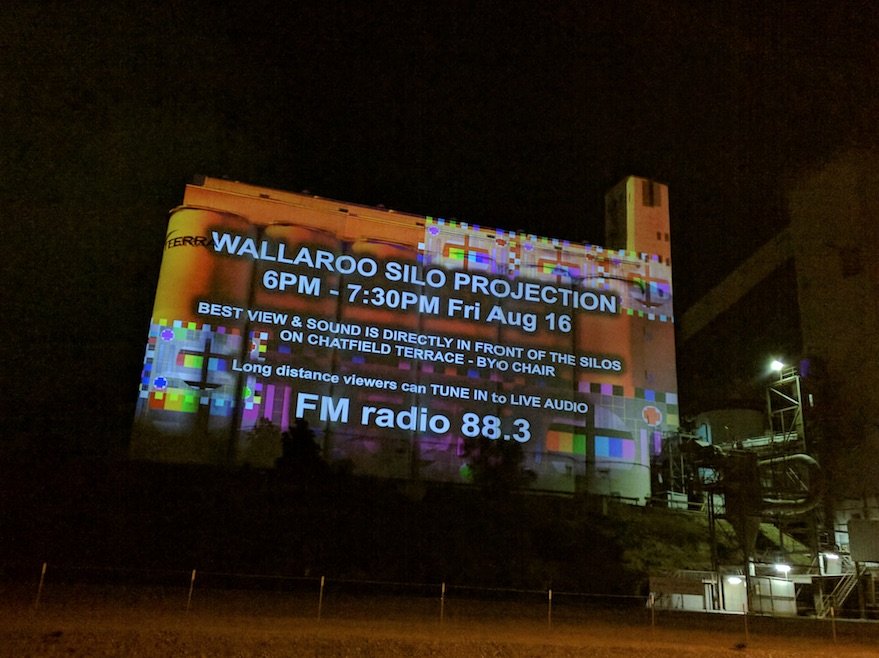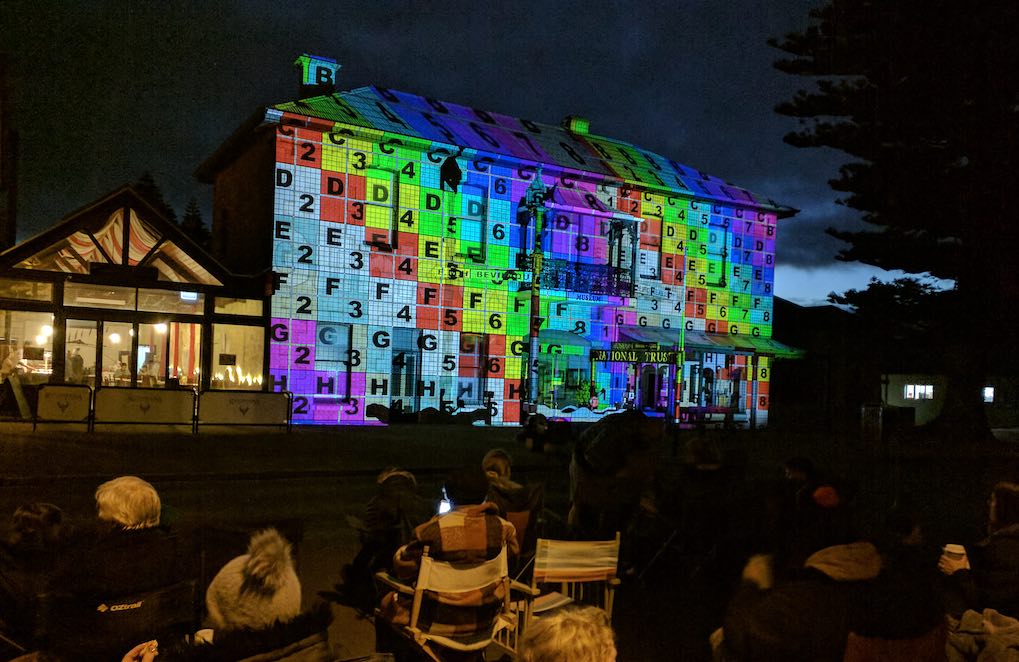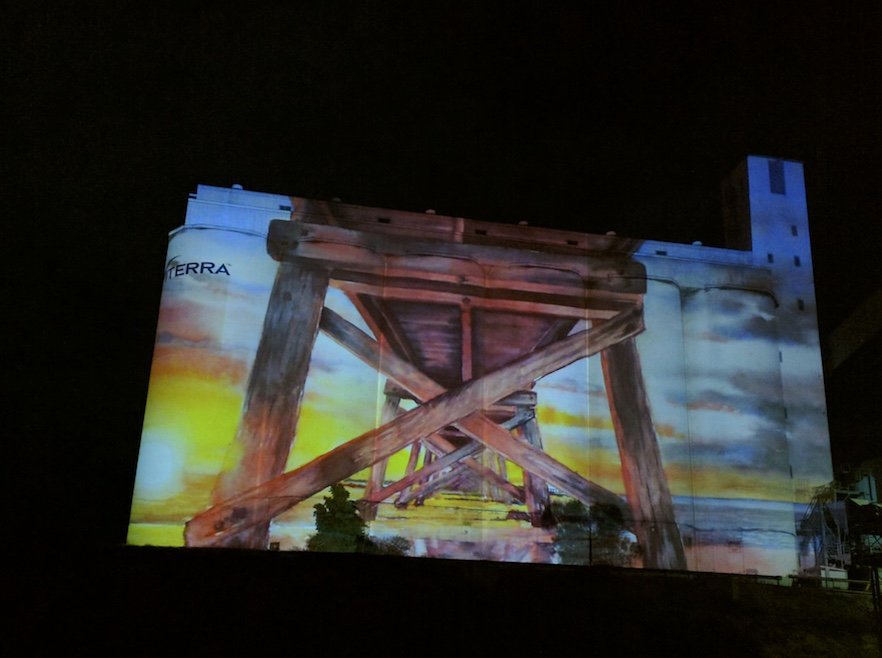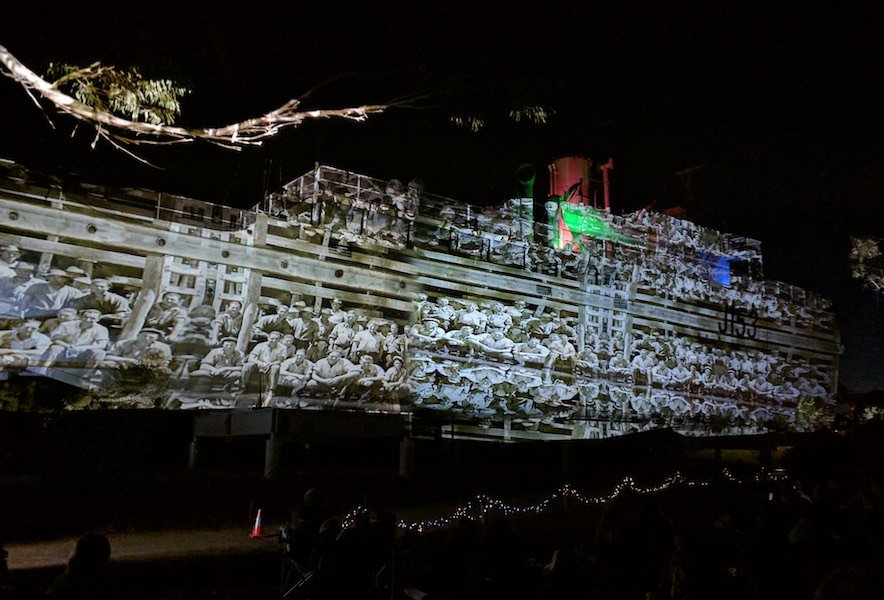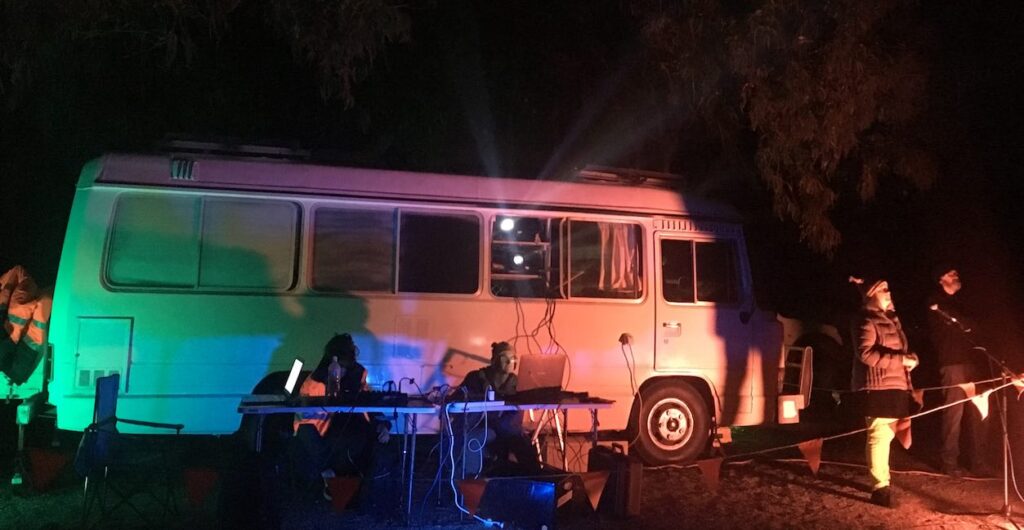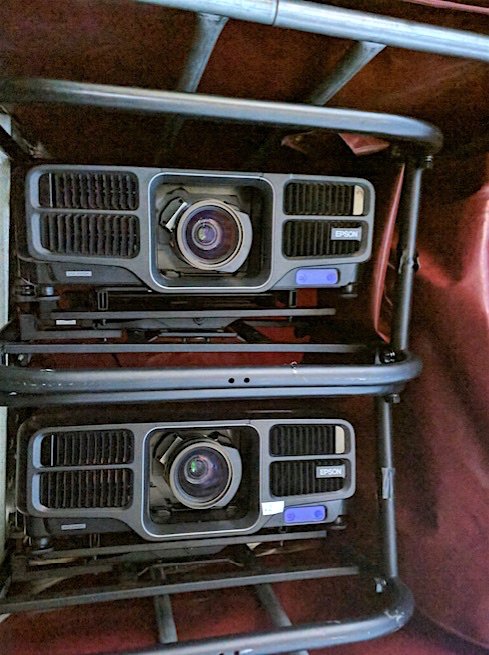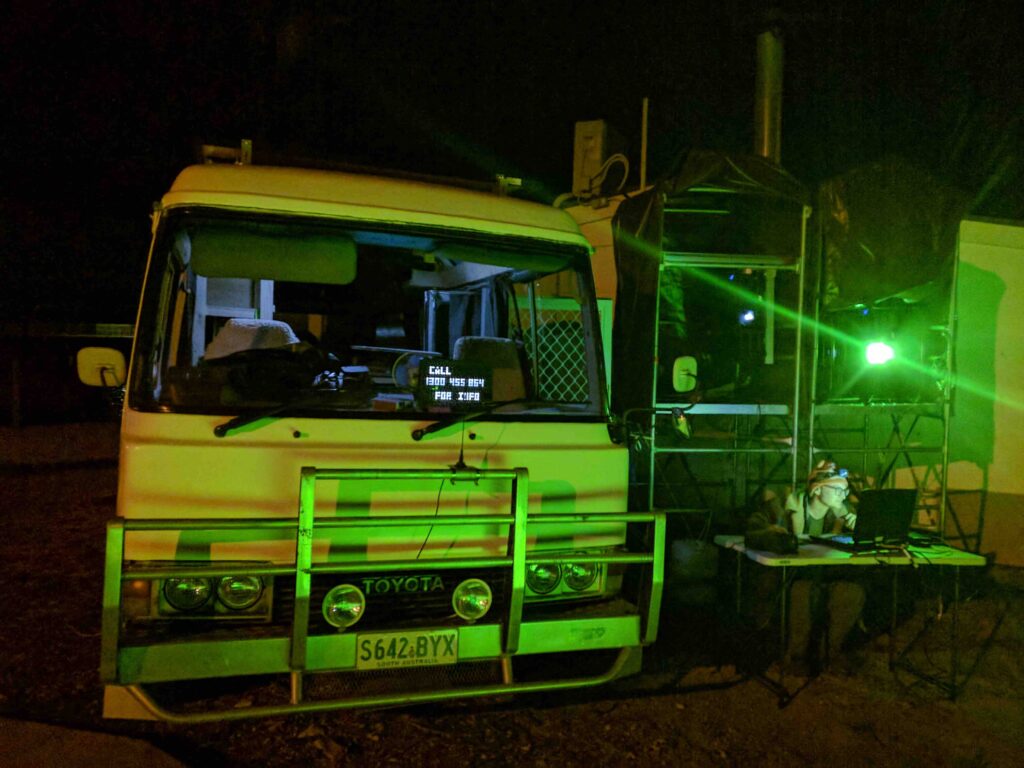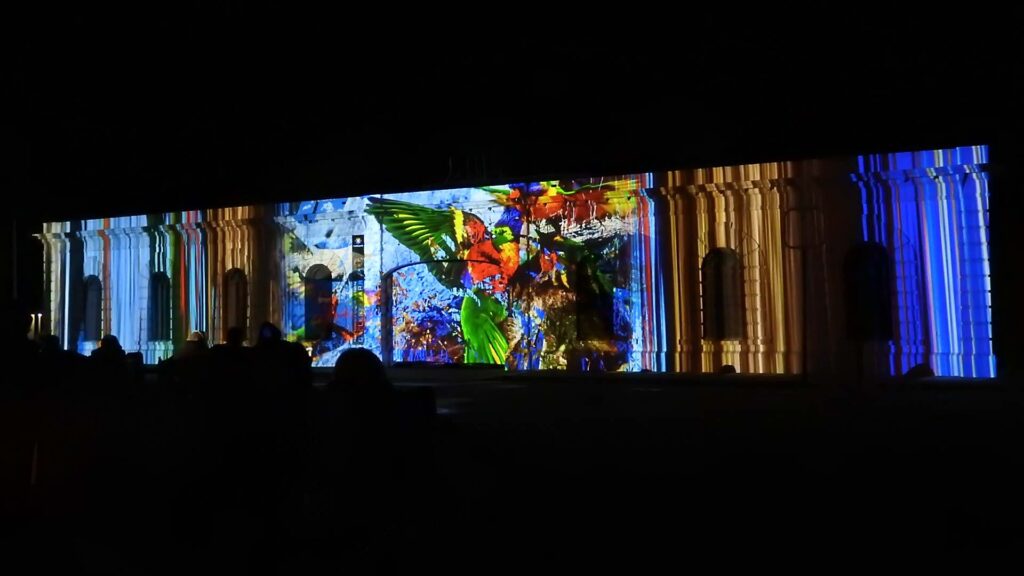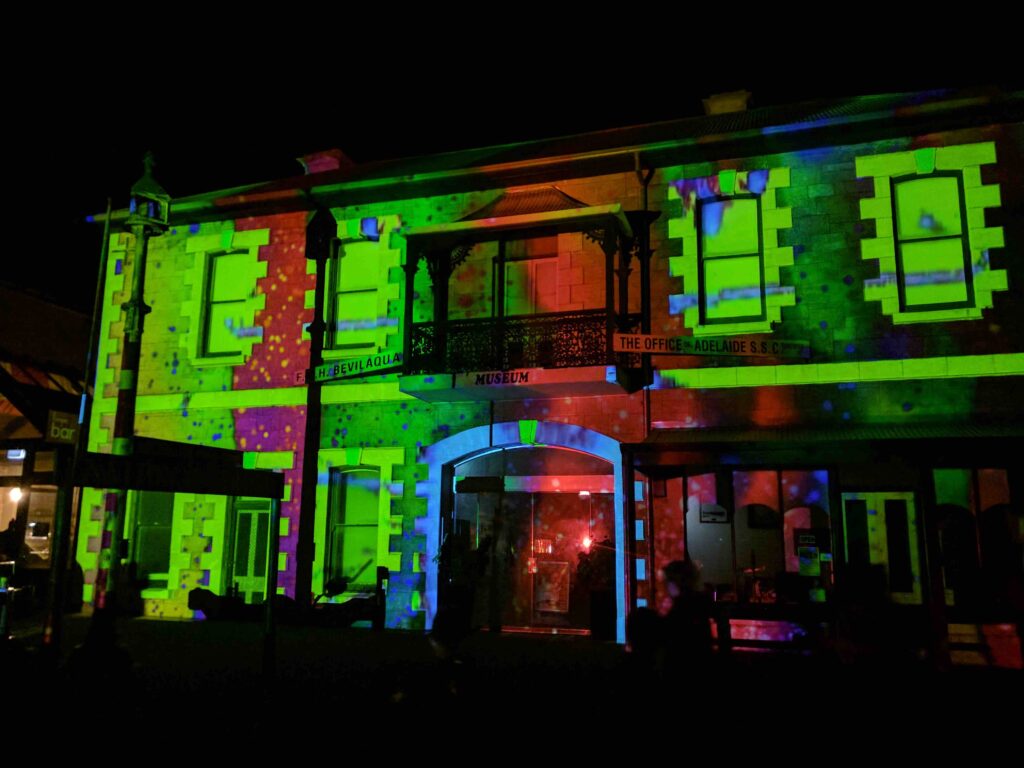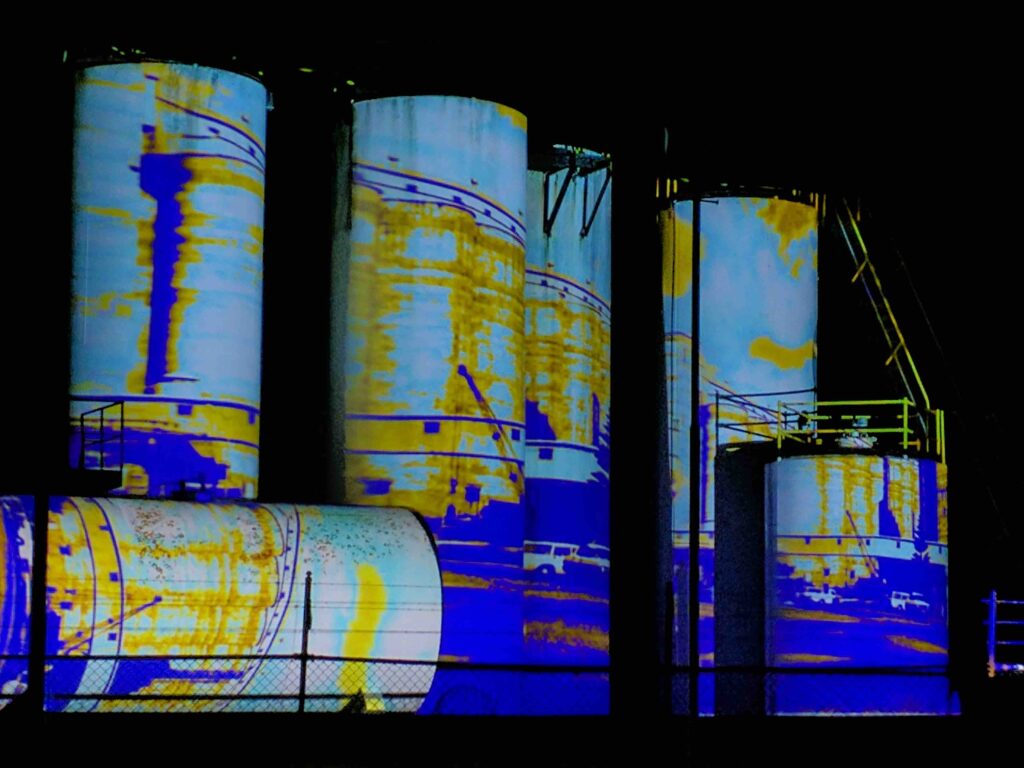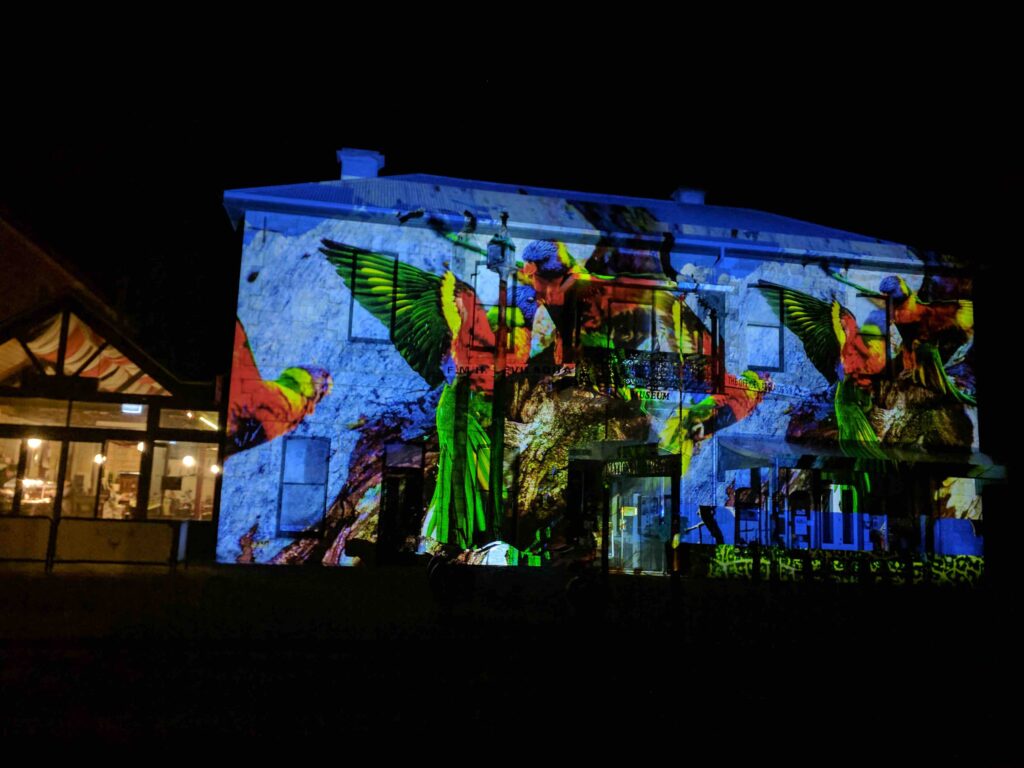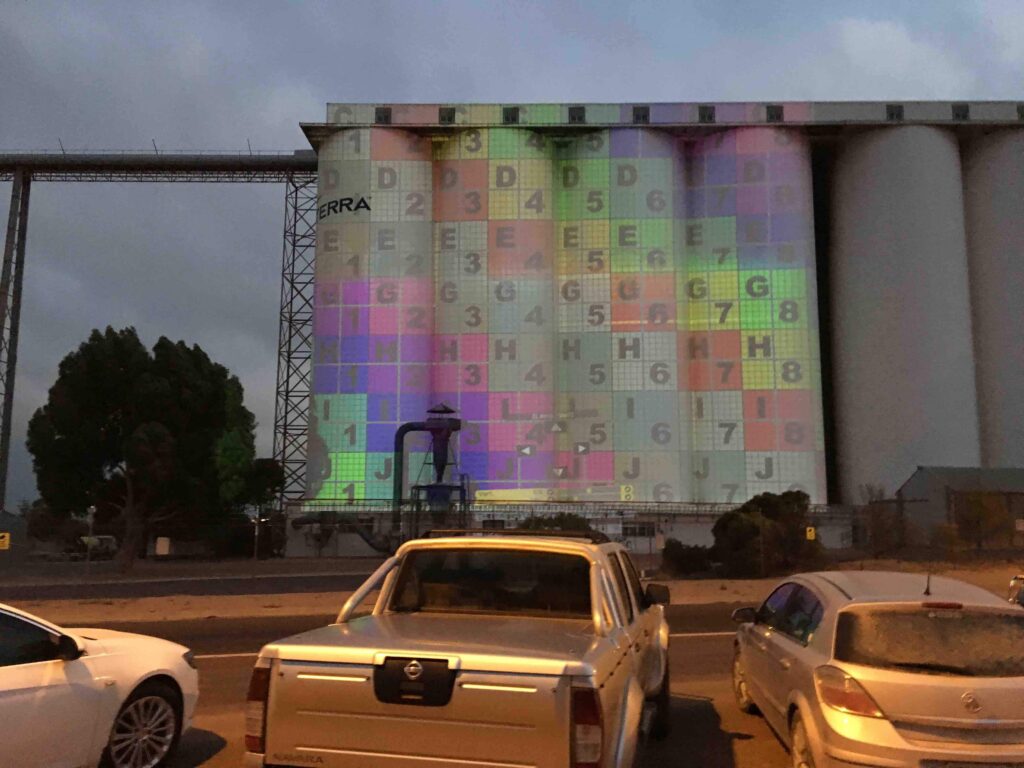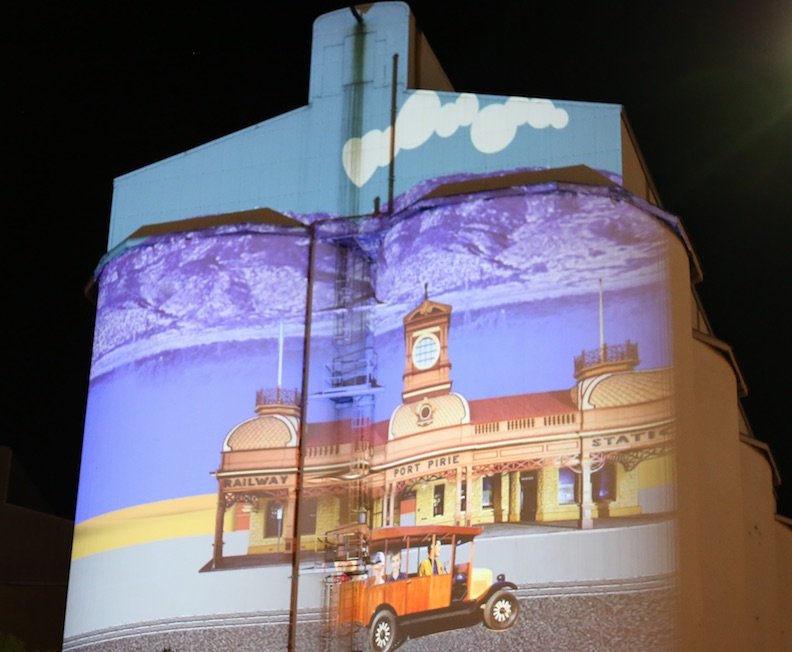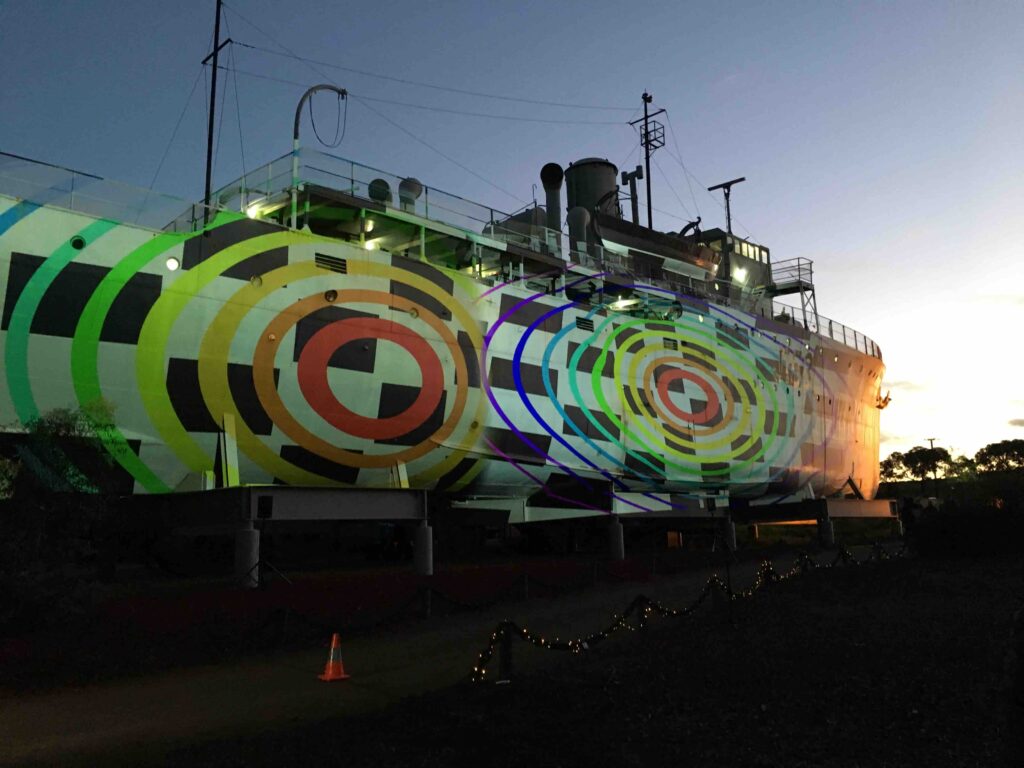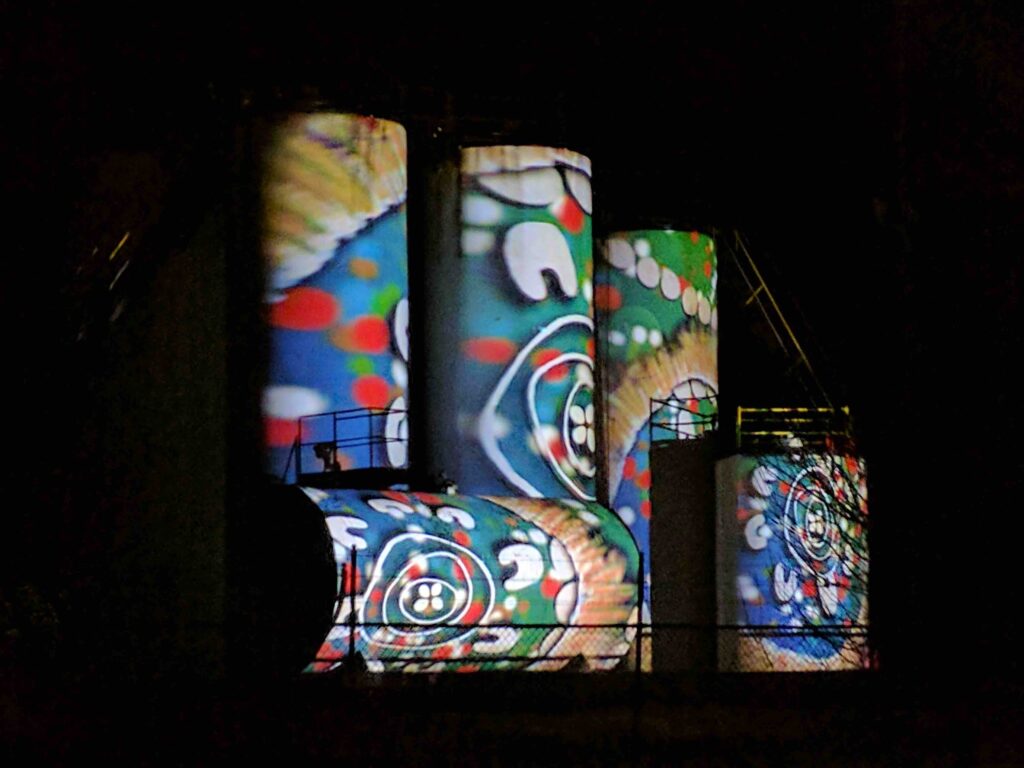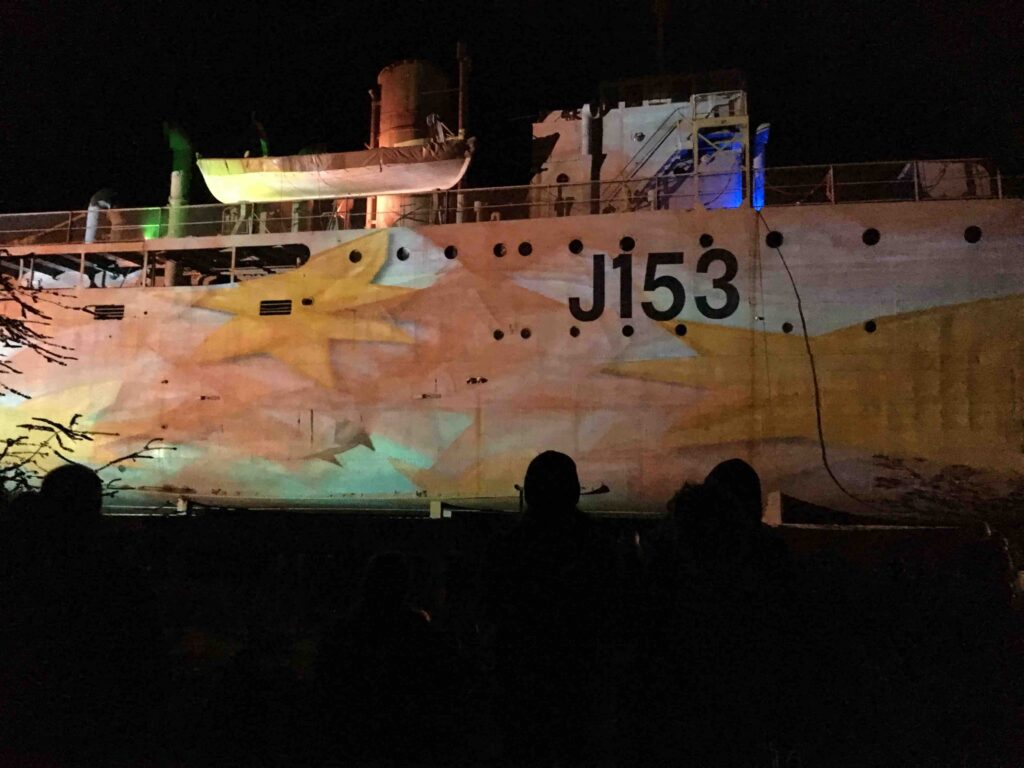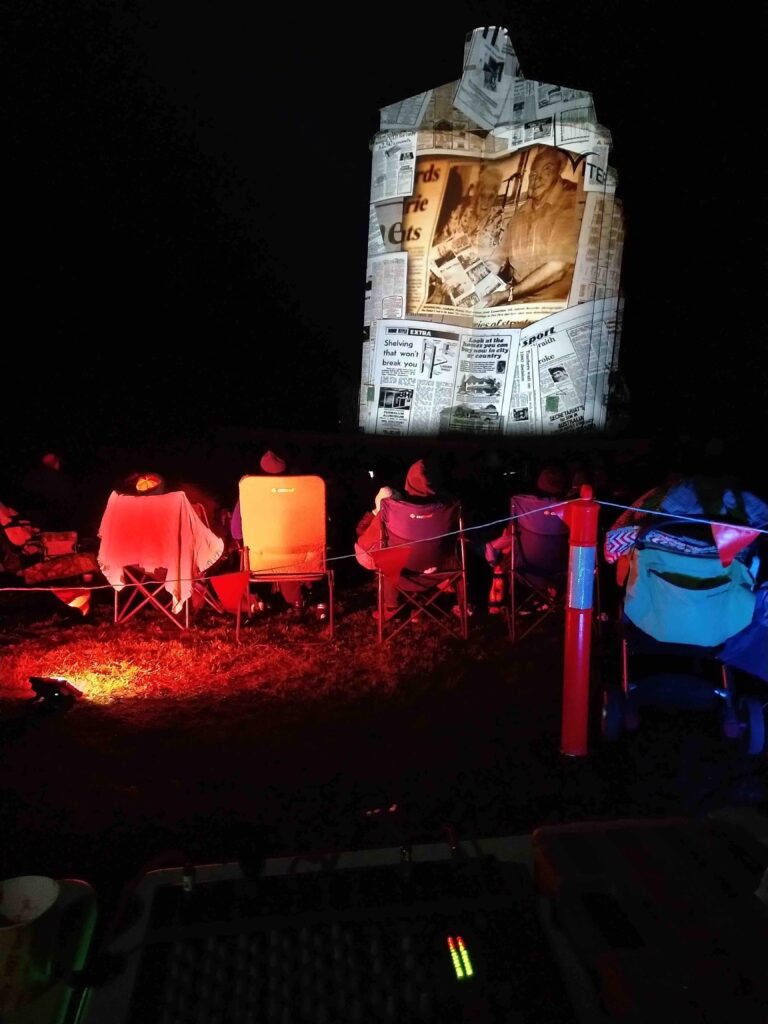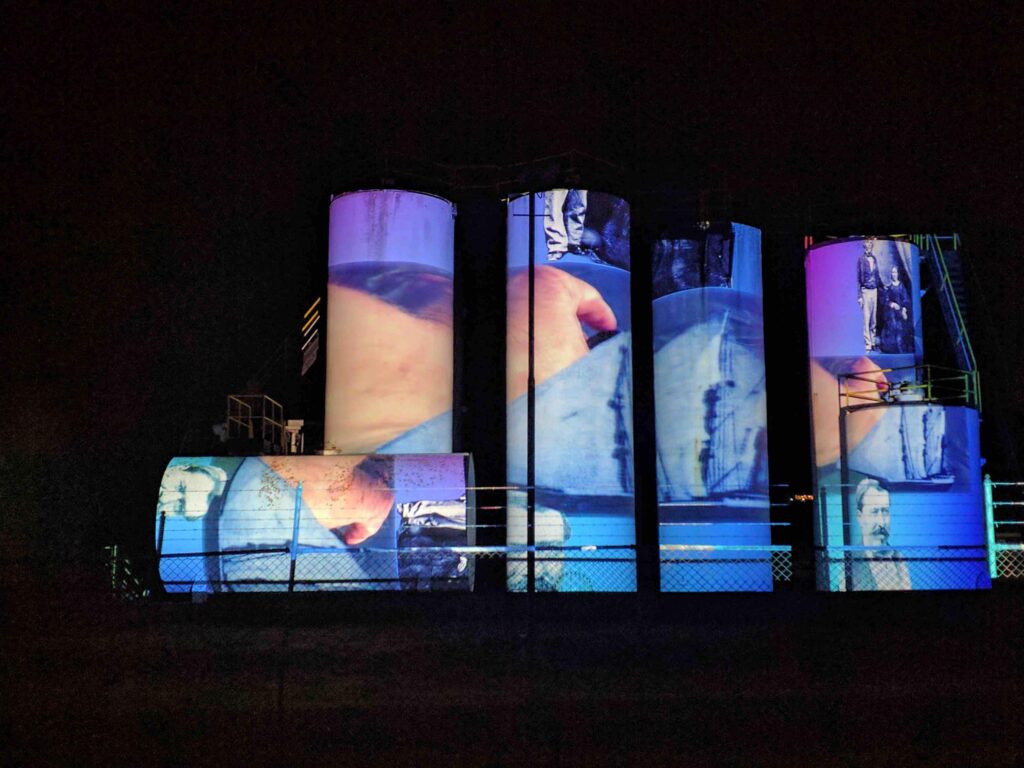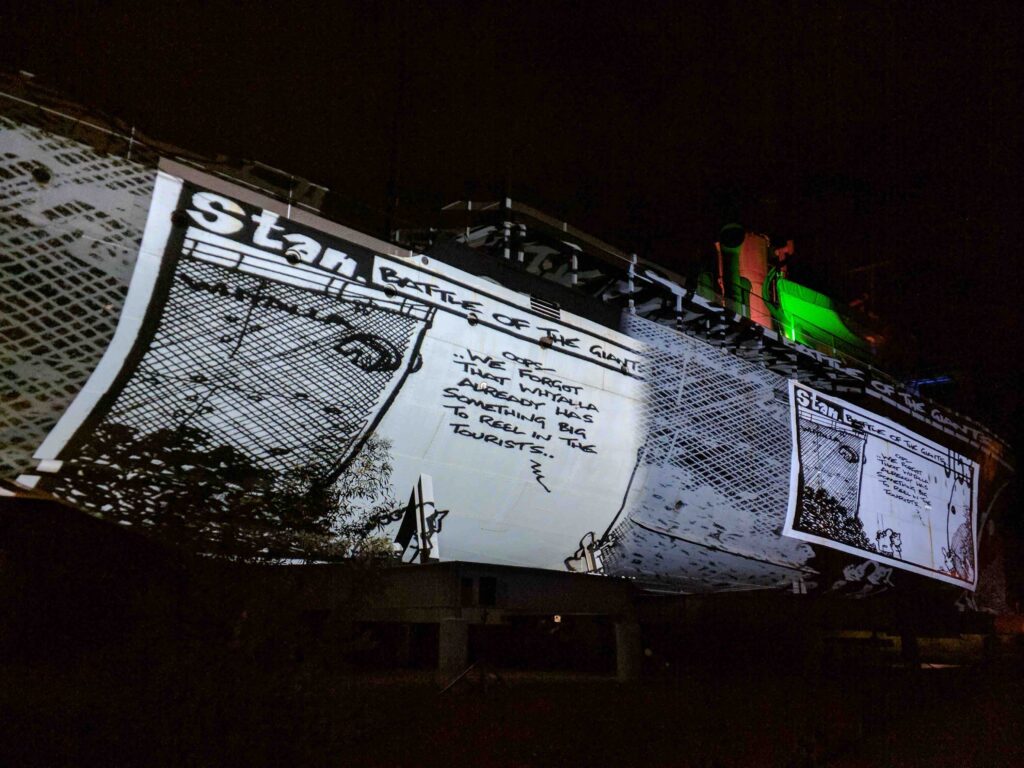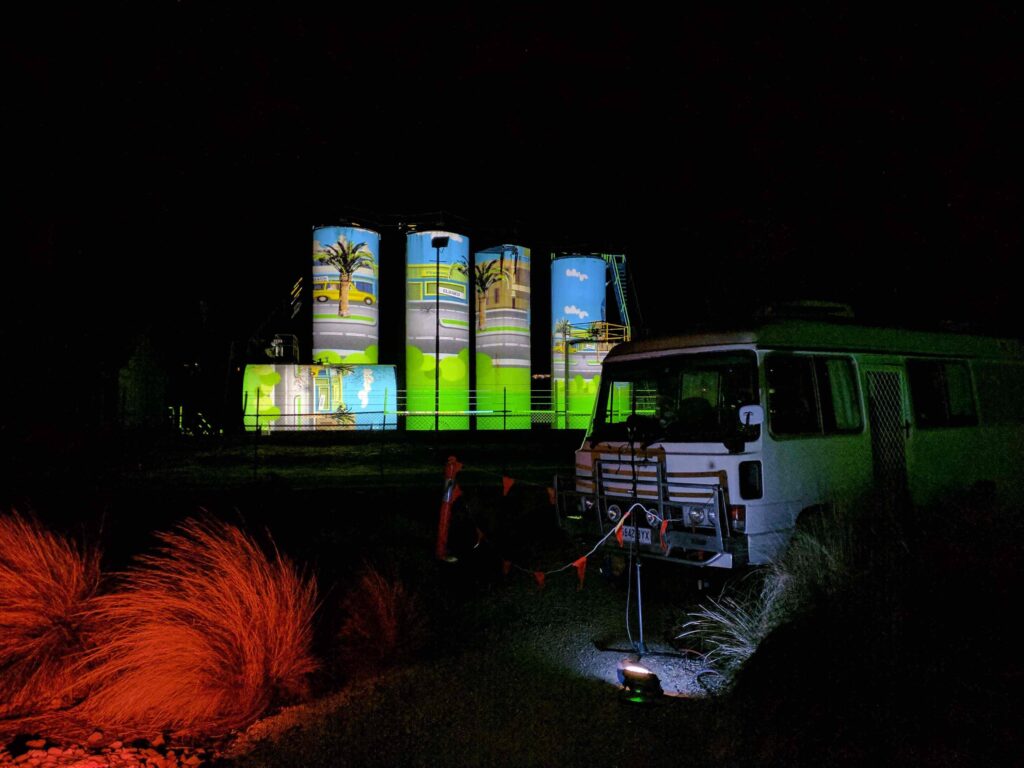News
11 Oct 2019
Travelling Light
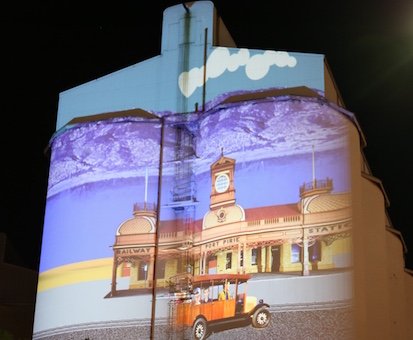
Subscribe to CX E-News
PROJECTION
Travelling Light
by Cat Strom.
Illuminart bring their projections to the people of South Australia
Illuminart are a team of artists who bring communities together to experience after-dark light shows through permanent projections and temporary installations. Their mission is to bring the art of storytelling to light and to bring people together to share the experience of stories created about their own local place.
Their latest project is Travelling Light – touring projection art and storytelling around regional South Australia in Moby, a bus that has been restored and kitted out with high-powered projectors.
As part of SALA (South Australian Living Artists Festival) they covered SA in a 4,000km round trip, sharing projection art storytelling with South Australians in 17 towns from Ceduna in the west, to Mount Gambier in the south east. Silos, town halls, or large walls were each illuminated for a single night, with bold moving image artwork and stories collected over years of preparation for this touring production.
The projections and stories changed for each location but all showcased animation about South Australia’s maritime and coastal heritage and shared stories about regional communities, created by animators and artists from around South Australia.
“Our tour is helping to bring some excitement and happiness to people in winter time,” said Illuminart director Cindi Drennan. “We aim to bring people together for a short burst of bright, colourful and invigorating creativity, combining history, humour and warmth, and celebrating creative storytelling.
“It has been the perfect way to bring communities together to share stories and heritage, and discover new things about their region.”
Presenting in August meant that projections could start as early as 6 PM, enabling children to attend as it is billed as an all-ages family friendly event.“We found that we get small audiences in the summer as it’s too late for young children,” added Cindi.
“We also wanted to showcase that we’re presenting moving image art, rather than movies, so we felt that to present during SALA put this in the right context for our artwork.
“As August can be chilly, we only run the show for an hour, which is enticing people to rug up and be adventurous as they know they’ll be home before 8 PM. We have had really good attendance everywhere, and great feedback and appreciation for bringing this tour to regional people.”
Projection sites on the tour ranged from the very wide, such as the side of a town hall, to the very tall such as a lighthouse – with aspect ratios ranging from 3:10, to 10:3. With such varying proportions it was essential for the team to create content that would work in all cases.
“Creating a narrative that was translatable to every single site was part of the challenge when we began working on the project,” said Cindi. “So we developed a content production methodology that makes our storytelling projection work effectively on a huge variety of landmarks, and it has been very successful.”
High-end projection mapped events in Sydney and Melbourne usually have at least two or three days to set up the projectors, getting them perfectly aligned and automated in their purpose-built secure housing. These costs are a significant barrier for regional communities to be able to experience large scale projection.
“To make the production possible, we devised a system that enabled us to set up in half an hour,” said Cindi. “Our process had to be fast; show up, position Moby, aim the projectors, and have it very quickly aligned so the audience would not be waiting long for the show to begin.
“We streamlined the normal technical process down to hours instead of days, and we incorporated the ‘lineup’ routine into the show, explaining what we’re doing to the assembling audience. It’s really helped people appreciate the technological element to the show as part of the storytelling and overall experience.”
Although illuminart are well known for their permanent projection installations, their expertise has helped make Moby and the Travelling Light project possible as a new permanent projection touring system.
By taking this approach, the team can arrive a mere two hours before show time and thus can visit many towns that cannot afford a crew and equipment for the usual multi-day set ups. This also enabled the team to put more of the budget back into the actual content creation.
“While we appreciate and value the technology and the power it gives to bring people together, the real legacy of these projects is in the narratives that are created, and these stories have a life long after the tour is over,” emphasized Cindi. “They will be part of a digital display that promotes all the towns and their unique heritage.
“I’d say 99% of our content is done using Adobe products such as Photoshop, Premier, and After Effects. We also train others in these tools, as it’s not just our team that creates the animation. We also invite remote collaboration from the community, and we train regional creatives and employ freelancers.
“There must have been close to 60 people involved in this project as remote digital collaborators around SA.”
Illuminart installed 12,000 lumen Epson projectors and an on-board permanent projector rack for Moby the bus, providing safe projector travel and operation with tilting and panning options. There are sets of Epson lenses (wide, standard and zoom) for each projector.
According to Cindi, the Epson projectors have a great contrast range and were fantastic on the tour. As they use a laser light source, they can be mounted portrait as well as landscape providing perfect flexibility for the wide range of sites.
“Before a show a lot of site planning is done so we know exactly where to position the projection bus and which lenses will be used,” said Cindi. “We align to cover the object, so for example if it’s a very tall silo and we’re quite close, one of the projectors has to be tilted at quite an angle.
“Our standard set up in Moby involves two projectors, one above the other, in a flexible configuration. We arrive in daylight, set the projectors, open the window bay, point through and calibrate as the sun sets. We are usually picture perfect within 15 minutes.”
The bus has a four-point jack system to overcome the normal suspension bounce that would occur as people stepped in and out of the bus during show operations. The bus also features solar panels with a large battery bank that allows a full time operational internet and mobile office system, alleviating many hurdles of remote and regional projects.
The projectors can also run off the battery bank but usually are run off either local power or a 3.3 KVA generator. “Although this is similar in process to guerilla projection, the expectations are higher, so preparation prior to the event is vital,” explained Cindi.
“This may include getting lights on in the building turned off or streets closed. Our efficient same-day set-up process works so well because we do a huge amount of work and consultation in advance and have great local partners on board with us to ensure it’s a success.”
Being fast and self-sufficient means that the illuminart team can run the show with a tiny crew, making the large scale activation easier for the local partners and co-hosts to support.
The benefits for the partners (usually regional councils) go beyond a free public event that may be attended by hundreds or thousands of people, to local opportunities (training, employment and exhibition), fundraising (as local businesses and charities step in to feed the hungry audiences) and local placemaking digital stories being produced that live on after the event.
Audio and music are integral to the digital stories and the events, helping to create the sense of presence and immersion. “In addition to music and sound effects in our soundtracks, we like to include voices to help create a sense of connection and add to the opportunities for heritage interpretation,” explained Cindi.
“We have a 1200w outdoor audio system and sound desk which is ideal for audiences of around 300, and add on to this for larger shows. We also tour with an MC microphone, four LED wash lights and fairy lights for a bit of fun.”
The tour is the culmination of illuminart’s multi-year Port to Port project, assisted by the Australia Council for the Arts and partners and sponsors including Flinders Ports, District Council of Streaky Bay, City of Onkaparinga, Arts SA, Country Arts SA, COTA and many regional towns and businesses over the five years since the project began.
CX Magazine – Oct 2019 Entertainment technology news and issues for Australia and New Zealand – in print and free online www.cxnetwork.com.au
© CX Media
Subscribe
Published monthly since 1991, our famous AV industry magazine is free for download or pay for print. Subscribers also receive CX News, our free weekly email with the latest industry news and jobs.

